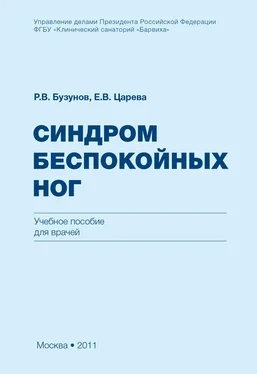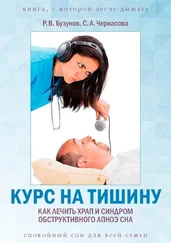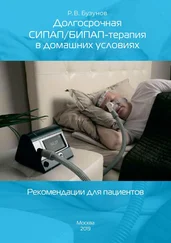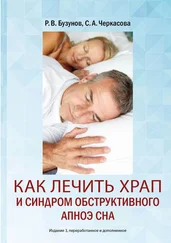В настоящее время не имеется препаратов, которые были бы одновременно эффективны в отношении СБН и полностью безопасны в отношении плода. Соответственно, медикаментозное лечение назначается только при тяжелых симптомах СБН.
Синдром беспокойных ног является достаточно частым расстройством, которое значительно ухудшает качество жизни человека. Недостаток знаний по этой проблеме приводит к тому, что пациенты годами и десятилетиями обращаются к врачам разных специальностей и применяют множество методов лечения, которые не приносят облегчения. В то же время еще в 1945 году K. Ekbom сказал: «Диагноз синдрома беспокойных ног обычно легко поставить, если имеешь представление об этом заболевании» [2]. В настоящее время имеются четкие диагностические критерии, на основании которых можно поставить точный диагноз и назначить эффективное лечение, позволяющее в большинстве случаев устранить или значительно облегчить страдания больного.
1. Willis, T. De anima brutorum quae hominis vitalis ac sensitiva est, excertitationes duae; prior physiologica ejusdem naturam, partes, potentias et affectiones tradit; altera pathologica morbos qui ipsam, et sedem ejus primarium, nempe ceerebrum et nervosum genus atti/ trans. by R. Davis. London, 1683: Two Discourses concerning The Soul of Brutes, Which is that of the Vital and Sensitive of Man Samuel Pordage. London, 1672.
2. Ekbom, K. A. Restless legs. Acta Med Scand, 1945, 158 – pp.5–123.
3. Teive, Hélio AG.; Munhoz, RP; Barbosa, ER. Professor Karl-Axel Ekbom and restless legs syndrome. Parkinsonism & Related Disorders, 2009, 15(4) – pp.254–7.
4. Ulfberg, J. The legacy of Karl-Axel Ekbom. Sleep Medicine, 2004, 5(3) – pp.223–4.
5. Allen, R. Restless Legs Syndrome Diagnosis and Epidemiology workshop at the National Institutes of Health; International Restless Legs Syndrome Study Group. Restless legs syndrome: diagnostic criteria, special considerations, and epidemiology. Sleep Medicine A report from the restless legs syndrome diagnosis and epidemiology workshop at the National Institutes of Health, 2003, 4 (2) – pp.101–19.
6. Restless legs syndrome. Causes, Diagnosis and Treatment [Electronic resource]/ RLS Foundation, 2011. URL: http://www.rls.org/ Document.Doc?&id=428. [Cited: 08.27.2011].
7. RLS Information. European Restless Legs Syndrome Study Group. [Electronic resource]/ RLS Foundation, 2011. URL: http://www.eurlssg.org/index.php?option=com_content&view=article&id=1&Itemid=3. [Cited: 08.27. 2011].
8. Phillips, B; Young, Y; Finn, L; Asher, K; Hening, WA; Purvis, C. Epidemiology of restless legs symptoms in adults. Arch Intern Med, 2000, 160(14) – pp. 2137–2141.
9. Nichols, Deborah A.; Allen, Richard P., Grauke, John H; Brown, John B.; Rice, Matthew L.; Hyde, Pamela R.; Dement, William C; Kushida, Clete A. Restless Legs Syndrome Symptoms in Primary Care. A prevelens Study. Arch Intern Med, 2003, 163 – pp.2323–2329.
10. Högl, B. et al. Restless legs syndrome: a community-based study of prevalence, severity, and risk factors. Neurology, 2005, 64(11) – pp. 1920–1940.
11. Tison, F.;Crochard, A.; Leger, D.; Bouee, S.; Lainey, E.; Hasnaoui, A. Epidemiology of restless legs syndrome in French adults: a nationwide survey: the INSTANT Study. Neurology, 2005, 65(2) – pp. 239–246.
12. Björvatn, B.; Leissner, L; Ulfberg, J; et al. Prevalence, severity and risk factors of restless legs syndrome in the general adult population in two Scandinavian countries. Sleep Med, 2005, 6(4) – pp. 307–312.
13. O’Keeffe, ST; Egan, D; Myers, A; Redmond, S. The frequency and impact of restless legs syndrome in primary care. Ir Med J, 2007, 100 – pp. 539-42.
14. Innes, Kim E.; Self, Terry Kit; Agarwal, Parul. Prevalence of restless legs syndrome in North American and Western European populations: A systematic review. Sleep Medicine, 2011, 12(7) – pp.623–634.
15. Allen, RP; Stillman, P; Myers, AJ. Physician-diagnosed restless legs syndrome in a large sample of primary medical care patients in western Europe: Prevalence and characteristics. Sleep Med, 2010, 11(1) – pp.31–37.
16. Sevim, S; Dogu, O; Camdeviren, H; Bugdayci, R; Sasmaz, T; Kaleagasi, H; et al. Unexpected low precalence and unusual characteristics of RLS in Mersin, Turkey. Neurology, 2003, 61(11) – pp. 1562–1569.
17. Hadjigeorgiou, GM; Stefanidis, I; Dardiotis, E; Aggellakis, K; Sakkas, GK; Xiromerisiou, G; et al. Low RLS prevalence and awareness in central Greece: an epidemiological survey. Eur J Neurol, 2007, 14(11) – pp. 1275–1280.
18. Kim, J; Choi, C; Shin, K; et al. Prevalence of restless legs syndrome and associated factors in the Korean adult population: the Korean Health and Genome Study. Psychiatry Clin Neurosci, 2005, 59-pp.350–53.
19. Kageyama, T; Kabuto, M; Nitta, H; et al. Prevalences of periodic limb movement-like and restless legs-like symptoms among Japanese adults. Psychiatry Clin Neurosci, 2000, 54 – pp. 296-8.
20. Tan, EK; Seah, A; See, SJ; Lim, E; Wong, MC; Koh, KK. Restless legs syndrome in an Asian population: A study in Singapore. Mov Disord, 2001, 16 – pp. 577-9.
21. Allen, RP. Race, iron status and restless legs syndrome. Sleep Med, 2002, 3 – pp. 467-8.
22. Berger, K.; Luedemann, J; Trenkwalder, C; John, U; Kessler, C. Sex and the risk of restless legs syndrome in the general population. Archives of Internal Medicine, 2004, 164 (2) – pp. 196–202.
23. Lee, HB; Hening, WA; Allen. RP; et al. Race and restless legs syndrome symptoms in an adult community sample in east Baltimore. Sleep Med, 2006, 7 – pp. 642–5.
24. Johnson, E. Omnibus sleep in America poll. National Sleep Foundation. Washington, DC. 1998, 8–9 – pp. 41-3.
25. Winkelman, JW; Chertow, GM; Lazarus, JM. Restless legs syndrome in end-stage renal disease. Am J Kidney Dis, 1996, 28 – pp.372–8.
26. Manconi, M; Govoni. V; De Vito, A; et al. Pregnancy as a risk factor for restless legs syndrome. Sleep Med, 2004, 5-pp. 305–8.
27. Purvis, C; Phillips, B; Asher, K.;et al. Self reports of restless legs syndrome; 1996 Kentucky behavior risk factor surveillance survey. Sleep Res, 1997, 26 – p. 474.
28. Ulfberg, J; Björvatn, B; Leissner, L; Gyring, J; Karlsborg, M; Regeur, L; et al. Comorbidity in restless legs syndrome among a sample of Swedish adults. Sleep Med, 2007, 8(7–8) – pp. 768–772.
29. Lavigne, G; Montplaisir, J. Restless legs syndrome and sleep bruxism: prevalence and association among Canadians. Sleep, 1994, 17 – pp. 739–43.
30. Earley, CJ. Restless legs syndrome. N Engl J Med, 2003, 348-pp. 2103–2109.
31. Picchietti, D; Allen, RP; Walters, AS; Davidson, JE; Myers, A; Ferini-Strambi, L. Restless legs syndrome: prevalence andimpact in children and adolescents – the Peds REST study. Pediatrics, 2007, 120-pp.253–66.
32. Allen, PR; Walters, AS; Montplaisir, J; Hening, W; Myers, A; Bell, TJ; Ferini-Stramb, L. Restless Legs Syndrome Prevalence and Impact: REST. Arch Intern Med, 2005, 165-pp.1286–1292.
Читать дальше











